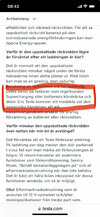Tesla tell us that the frequency of supercharging can affect range in the manual and online:
From tesla.com:
View attachment 1040383
From my S manual:
(In swedish, I didnt care to download a english version, but in short it states the same as on tesla.com)
View attachment 1040384
So, I find it strange that Tesla would spread myths.
The issue is lithium plating.
This is Panasonic ncr18650, virtually the same as model S/X. In other tests the exact S cells from a S car behaves
very similar to regular Panasonic ncr18650.
Its clear that higher charging rate than 1.0A (equals 0.35C or ~ 35kW in a S or ~ 27kW in a 3).
View attachment 1040385
This is LG M-50, the cell used in 3/Y for a couple of years in Europe and other places, now also in 3 in US:
View attachment 1040388
We can see that even a mildly increased charge rate will introduce lithium plating.
Reducing the C-rate at higher SOC as Tesla do is good but not a complete solution.
Lithium plating comes from high currents during charging.
It can be avoided by reducing the charging rate and/or heating the battery.
I always preheat when I can.
Tesla can not make sure that all supercharging starts with a preheated battery.
When supercharging the battery will be preheated until reaching the target temp (quite high) even if the car was completely preconditioned before, this is to
reduce the negative effects of fast charging.
The only way to completely remove the negative effects of Supercharging would be to have the charging power reduced quite much.
There is a recovery effect where plated lithium is restored to cyclabe lithium again. Cycling at normal C-rates will do this (AC-charging, normal driving). We need several cycles between/after fast charging to do this, and all lithium plating would most probably not be restored.
I know one Model 3 P here in sweden which was almost only supercharged. (I think it was a rate of ~80-85% according to BMS data read by SMT).
The battery broke north of the warranty (230K km / 140K mi or so).
The car was taken to a EV Battery company (that fix Tesla batteries) and the conclusion was that there where some cells that was completely dead due to short circuit in the cells.
Ended up with getting a used battery via that EV company.
We know from the research that lithium plating comes from high charging currents and we know that the end result if it is let go to far is shorted cells.
This car did only show ~12% degradation a short time before according to the BMS via SMT, and ~10% less range displayed.
So we also learn that lithium plating might not always show clearly as loss of range, but the lithium plating is there and has already caused the damage.
(This car was always preconditioned before supercharging sessions sccording to the owner.)
Recommend reading:
Good report
(Many reports focused on lithium plating and fast charging techniques are not open, so I can not give a link, even when having the report).



